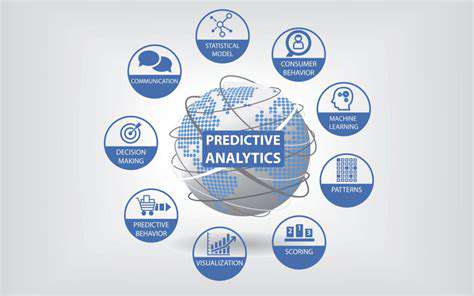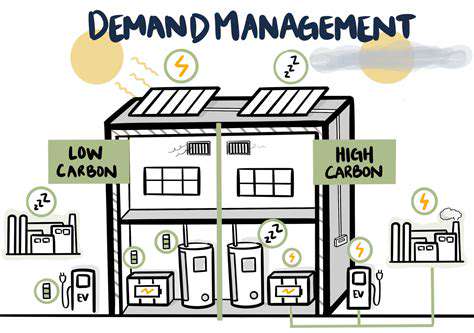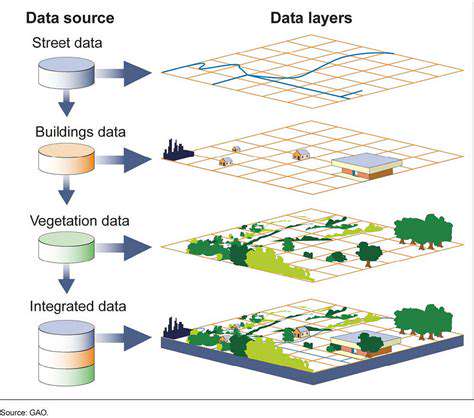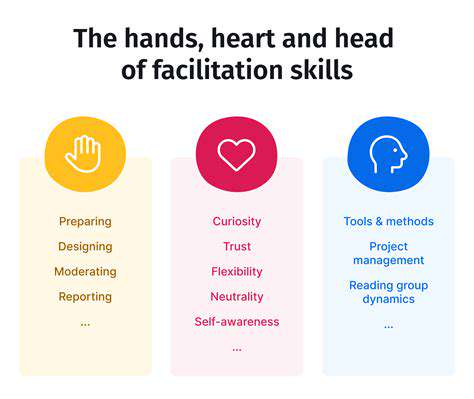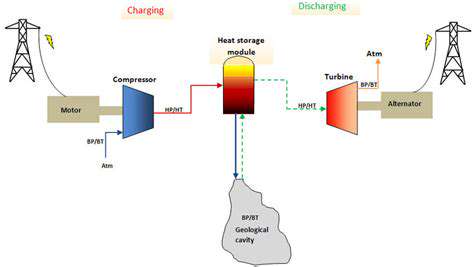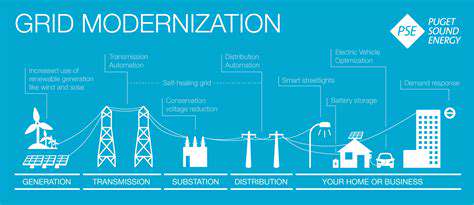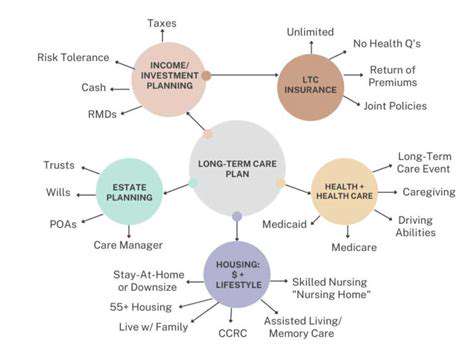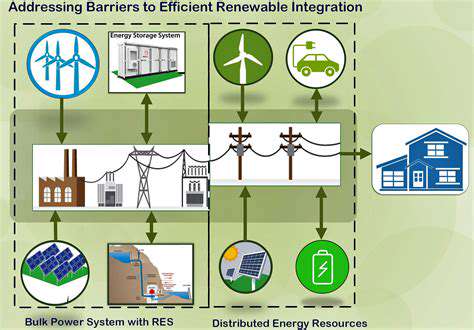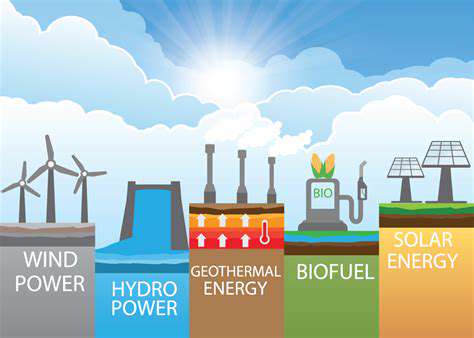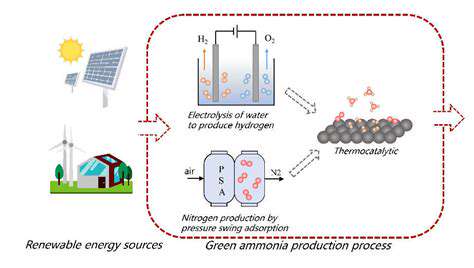Wind Energy and Grid Integration Challenges: Solutions and Strategies
Grid Infrastructure Limitations: Adapting for Increased Renewable Penetration
Grid Infrastructure Limitations in the Face of Increased Wind Power
Modern power grids, originally engineered for consistent fossil fuel generation, struggle to handle the unpredictable nature of wind energy. The fundamental mismatch between conventional grid design and renewable energy requirements creates substantial operational challenges. As wind farms proliferate, transmission networks must evolve to manage power fluctuations that can range from zero to full capacity within hours. This transition demands both physical infrastructure improvements and advanced operational strategies to prevent systemic instability.
The existing grid's rigidity often leads to curtailment of wind generation during peak production periods, wasting clean energy. Grid operators now prioritize developing dynamic load-balancing techniques that incorporate real-time weather data and predictive analytics to optimize wind energy utilization.
Transmission Capacity Bottlenecks
Wind-rich regions frequently lack adequate transmission corridors to deliver power to population centers. The not in my backyard phenomenon compounds this issue, as local opposition often delays or prevents necessary transmission line construction. Innovative approaches like high-voltage direct current (HVDC) lines and underground cabling solutions are gaining traction as alternatives to traditional overhead lines.
Economic analyses reveal that every dollar invested in transmission infrastructure yields $2-4 in system benefits, making these upgrades financially justifiable despite high initial costs. Strategic placement of new substations and converter stations can dramatically improve grid flexibility.
Intermittency and Energy Storage
Wind's variability presents unique storage challenges that differ from solar's predictable daily cycle. Emerging storage solutions like flow batteries and thermal storage systems show particular promise for wind integration, offering longer discharge durations than conventional lithium-ion batteries. Hybrid systems that combine multiple storage technologies are proving particularly effective at smoothing wind power output.
Pumped hydro storage, while geographically limited, remains the most cost-effective large-scale solution, with some facilities capable of storing energy for weeks rather than hours. The development of underground compressed air energy storage (CAES) systems could provide another viable alternative in suitable geological formations.
Distribution Grid Upgrades
Local distribution networks require extensive modernization to handle bidirectional power flows from distributed wind installations. Smart inverters and advanced voltage regulation equipment are becoming essential components for maintaining power quality as more wind turbines connect to distribution circuits. Microgrid controllers that can island critical loads during disturbances are proving valuable for maintaining reliability.
The transition to digital substations with phasor measurement units (PMUs) enables much faster response to grid disturbances caused by wind variability. These upgrades also facilitate better integration of behind-the-meter wind generation from commercial and industrial facilities.
Grid Management and Control Systems
Next-generation energy management systems (EMS) now incorporate machine learning algorithms to predict wind patterns with increasing accuracy. These systems can automatically adjust grid operations hours in advance of expected wind generation changes. The implementation of distributed control architectures helps prevent cascading failures that might originate from wind farm disconnections.
Real-time dynamic line rating technology allows operators to safely increase transmission capacity during windy periods when lines cool more efficiently. This simple innovation can boost existing infrastructure capacity by 10-30% without physical upgrades.
Policy and Regulatory Frameworks
Progressive policies are eliminating artificial barriers to wind integration, such as outdated grid connection requirements. Performance-based regulation is replacing prescriptive rules, allowing utilities more flexibility in meeting reliability standards. Regional transmission organizations are developing new market products specifically designed to value wind energy's unique characteristics.
Transmission cost allocation reforms are helping spread infrastructure costs more equitably across beneficiaries. Several states have implemented wind energy zones with streamlined permitting processes that dramatically reduce project development timelines.
Demand-Side Management and Energy Storage: Essential Synergies
Demand-Side Management: Shaping Energy Consumption
Modern DSM programs have evolved beyond simple time-of-use pricing to incorporate automated demand response systems. Industrial facilities now use real-time price signals to adjust production schedules, while residential smart thermostats autonomously shift heating and cooling loads. This granular control enables precise matching of demand to wind availability, reducing the need for conventional backup generation.
Innovative programs are rewarding customers for providing upward flexibility during wind lulls and downward flexibility during wind surges. Some utilities now aggregate distributed energy resources into virtual power plants that can respond to wind variability within seconds.
Energy Storage: A Critical Buffer
The storage landscape is diversifying beyond lithium-ion to include technologies better suited for wind integration. Gravity storage systems and liquid air energy storage are emerging as viable options for long-duration storage needs. Behind-the-meter storage at commercial sites is creating new opportunities for localized wind energy utilization.
Storage-as-a-transmission-asset (SATA) models are proving particularly effective for wind integration, allowing storage systems to serve multiple grid functions simultaneously. Some wind farms now incorporate storage directly into their designs, creating hybrid facilities that deliver more consistent output.
Synergies Between DSM and Energy Storage
The most advanced grid operators now treat demand response and storage as complementary resources in a unified flexibility portfolio. Machine learning optimizes the coordinated dispatch of these resources based on wind forecasts and grid conditions. Some systems automatically shift between demand response and storage charging depending on which provides better economics at any given moment.
Virtual battery concepts that aggregate flexible demand are achieving storage-like performance without physical batteries. These approaches are particularly valuable in regions where regulatory barriers limit traditional storage deployment.
Enhanced Grid Flexibility and Reliability
The combination of advanced DSM and next-generation storage has enabled some grids to achieve over 60% annual wind penetration without compromising reliability. Dynamic stability controls now use real-time measurements from wind turbines to anticipate and counteract potential grid disturbances. Phasor measurement networks provide the visibility needed to safely operate grids with high wind shares.
Resilience-focused architectures are incorporating wind, storage, and demand response into self-healing grid designs. These systems can automatically reconfigure during disturbances to maintain power to critical loads using available wind generation.
Economic and Environmental Benefits
Integrated wind-storage-DSM systems are demonstrating significant cost advantages over conventional approaches. Some regions have reduced peak capacity requirements by 15-20% through optimized wind integration. The environmental benefits multiply when flexible demand allows more wind to displace coal rather than just natural gas generation.
New business models are emerging that share the value of wind integration among utilities, customers, and third-party providers. These arrangements are accelerating deployment while keeping costs affordable for all stakeholders.
